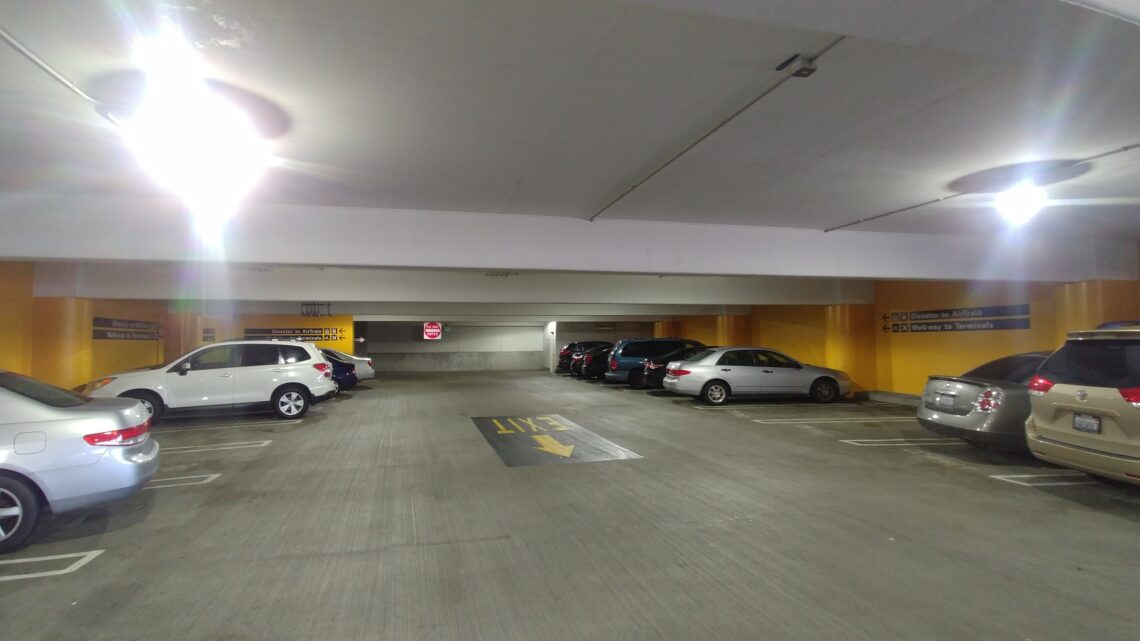SFO LTPG2 is the new 2.1Msqft parking facility at San Francisco Airport. SFO intends to be the first Zero-Net Energy (ZNE) airport in the world, and to contribute towards that goal this facility must generate considerably more energy than it consumes, or ZNE+.
We expect the garage to generate an impressive 278% energy surplus, and lighting is a big part of that story. The project won an Illumination Award of Excellence in the Energy and Environmental Design category
Lighting design can be a technical discipline. There are published lighting metrics we generally design to, but there are also aspects of lighting quality that aren’t well captured by the metrics.
For example, large amounts of light emitted at shallow angles increases uniformity on the floor which looks good in a calculation, but can be a source of glare in person.

Of course, even on a ZNE+ project there’s a lot more to good lighting design than just delivering the lowest possible energy consumption. Lighting design is always an integrative process which attempts to reconcile a multitude of different and often contradictory requirements. It’s important to stay focused on the end user experience though the entire design process.
While the adoption of LED technology has reduced energy efficiency, the greatest energy savings are to be found by turning off the lights when they’re not needed. Therefore, lighting controls design is crucial to attaining ZNE+ performance.
Visitors pass through “Coding,” an immersive art installation designed by Johanna Grawunder integrated into the elevator tower. Magic mirror panels dot-dash messages in Morse code; yellow steel tags on the exterior mullions recall the cardinal directions; luminous ceilings and volumes color-change and become kinetic elements that amplify the up/down movement of travelers. The elements are dynamic day and night through the use of materials that respond to reflection, luminosity and color-changing light.
For many visitors, the garage is the first and last impression of their travel journey. We think all of this adds up to a different, maybe slightly more thoughtful parking experience.